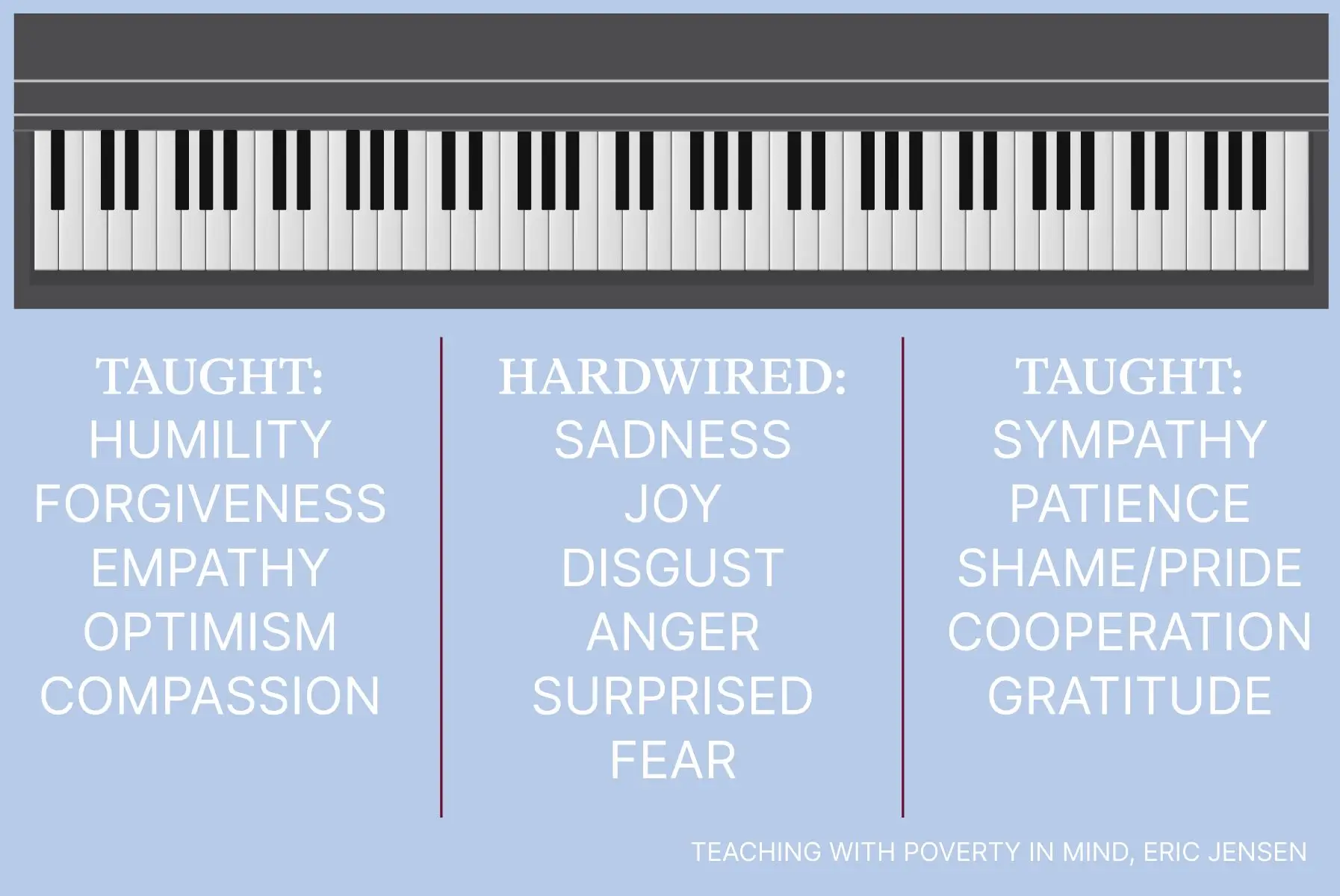We love the concept of the emotional keyboard from Eric Jensen’s book, “Teaching with Poverty in Mind”. He describes the range of human emotions like a keyboard. In the middle of the keyboard are emotions that are hardwired at birth: sadness, joy, disgust, anger, surprise and fear. On the edges of the keyboard are emotions that are taught, such as humility, compassion, patience, shame and gratitude.

Children who grow up in poverty, he argues, use fewer keys than children from more affluent environments. The emotions in the center of the keyboard are wired into our DNA from birth and are accessible to all children. The others are taught.
First, let’s talk about why children growing up in poverty can’t always reach the keys on the outer edges of the keyboard.
Many research studies have shown the importance of a secure attachment between a child and parent or caregiver. Especially in the first three years of life, children need consistent, predictable love and support from adults and safe home environments. Children also need adults who attune to their emotions, which helps them develop a wide range of emotional complexity. Children raised in poverty are less likely to have these emotional needs met for a variety of reasons. Parents are more likely to be over-worked, spending less time with their children than their affluent peers. They are also more likely to leave their children unattended for longer periods of time, and children in poverty spend less time playing outdoors or participating in extracurricular activities and more time watching television. As Jensen puts it, “Unfortunately, children won’t get the model for how to develop proper emotions or respond appropriately to others from watching cartoons; they need warm, person-to-person interactions.”
In the absence of these warm, person-to-person interactions, children are less likely to learn more complex emotions that live on the outer edges of the keyboard.
What are the implications of this smaller range of emotions?
Think about it this way: if a child has not been exposed to the emotion of humility, he won’t have any concept of how to exercise this emotion appropriately when the situation arises. So this child may win a playground game and run around gloating, with no awareness at all that his actions are annoying or hurtful to the other children on the playground. A teacher may interpret this behavior as disruptive or disrespectful. But if the teacher realizes that this child only has access to those few keys in the center of the keyboard, she might understand that the child isn’t intending to be disrespectful. Rather, his brain is processing this experience (winning the game) with an emotion that he is familiar with (joy).
As Jensen states, “It is impossible to overemphasize this: every emotional response other than the six hardwired emotions of joy, anger, surprise, disgust, sadness, and fear must be taught.” So when adults expect children to have or demonstrate a certain emotion that falls outside of these six, it is critical to remember that not all children – especially those from environments of poverty – have been taught a complex emotional language. The emotional keyboard is a great visual for us to remember that when working with children in poverty, teaching is about way more than academics. We must teach children emotional literacy so that they can have full range of their emotional keyboard in order to achieve their full potential.
Share with
Related Resources